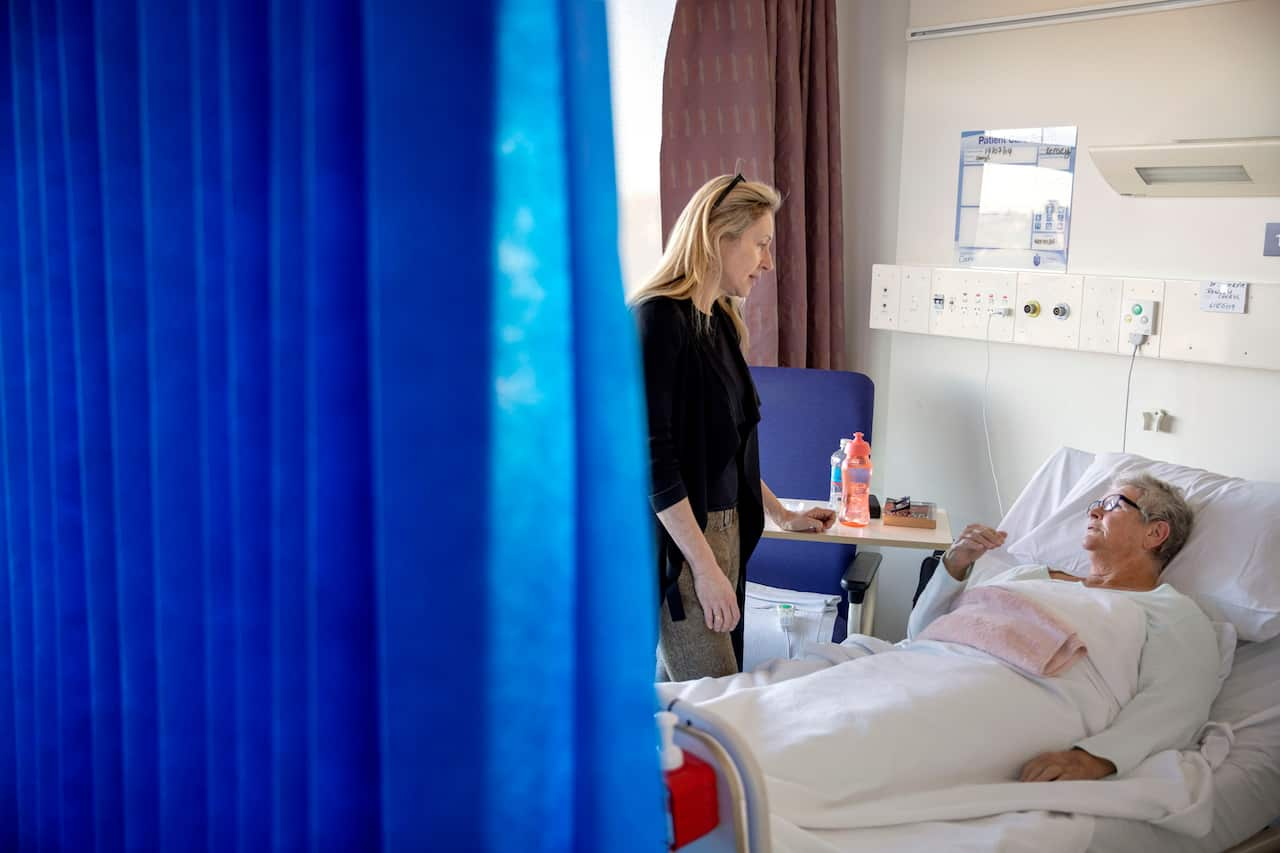A new report card on the health of Australians shows the illnesses people are experiencing at different stages of life.
The Australian Institute of Health and Welfare's (AIHW) biennial report Australia's Health 2024, published on Tuesday, provides a snapshot of the health of Australians' health and healthcare systems.
The report also brings together the most recent data on Australian lifespans, with national life expectancy now in the 80s.
Life expectancy is fourth highest in the OECD
According to the report, Australian life expectancy at birth is the fourth highest among 38 Organisation for Economic Co-operation and Development (OECD) countries, after Japan, Korea and Switzerland.
A boy born in 2020-2022 can expect to live on average 81.2 years, while life expectancy for a girl is even higher, at 85.3 years.

The average life expectancy for Australians. Source: SBS News
During the COVID-19 pandemic, life expectancy decreased for the first time since the mid-1990s — dropping by 0.1 years between 2019/21 and 2020/22 — likely due to an increase in deaths in 2022.
But Australians can still expect to live more than 40 per cent longer than they did a century ago. Those born in the early 1900s were only expected to live to age 55.
"Even though life expectancy in Australia decreased in 2020–2022, it was still higher than it was in 2017–2019, prior to the pandemic, by 0.3 years for males and females," AIHW deputy chief executive officer Matthew James said.
Life expectancy fell even more sharply in the United States during the COVID-19 pandemic from 78.9 in 2019, to 76.4 in 2021; and the United Kingdom from 81.3 in 2019, to 80.4 in 2020.

Australia has fewer smokers than many other OECD countries but high levels of overweight and obese residents. Source: SBS News
We're healthier for longer
As life expectancy has increased, Australians are also enjoying a longer period of full health.
Men are expected to live for 71.6 years in full health, 2.2 years longer than in 2003. Women gained 0.8 years of full health and were expected to be healthy for 73.6 years.
But men on average are estimated to spend 9.7 years with ill-health (up from 8.7 years) and women to spend 11.5 years in ill-health (up from 10.2 years).
This contributes to demand on the health system and other services.

Australians are healthier for longer but we also spend longer in ill health. Source: AAP
Health issues experienced at different stages of life
Data on hospital admissions in 2022-2023 show the reasons for surgery vary by age.
Babies and children under five years of age were hospitalised most often for respiratory system diseases, while digestive system diseases were most common for young people up to the age of 24.
Digestive diseases include those related to tooth development, gingivitis, jaw anomalies, oesophagus, stomach, appendix, hernia, intestines, liver, gallbladder and pancreas.
Pregnancy and childbirth was a top factor for hospitalisation for those aged 25-44, while older Australians were more likely to be admitted for care involving dialysis or cancer.

Top 3 reasons for hospitalisation in 2022-23 for each age group. Source: SBS News
COVID-19 was third-leading cause of death
In 2022, COVID-19 became the third leading cause of death in Australia, the first time in more than 50 years an infectious disease was in the top five. Influenza and pneumonia were the fifth leading causes in 1970.

Coronary heart disease is the leading cause of death in Australia. Source: SBS News
Leading causes of death have shifted from infectious diseases to chronic conditions. Overall, chronic conditions contributed to 90 per cent of all deaths in 2022.

Leading causes of death for females in 2022. Source: SBS News
Among First Nations people, cancer is the most common group of diseases causing death, overtaking cardiovascular disease in recent years.

Leading causes of death for males in 2022. Source: SBS News
Ill health is costing Australians
Health issues such as coronary heart disease, back pain and anxiety are costing Australians many years of healthy life.
The burden of disease measures the impact of diseases and injuries.
In 2023, it was estimated that Australians lost 5.6 million years of healthy life due to either ill-health or dying prematurely.
Among males, the leading burden of disease was coronary heart disease, followed by back pain and problems, suicide and self-inflicted injuries.
Among females, the leading cause was dementia, followed by anxiety disorders, and back pain and problems.
It was a different story for First Nations people, with mental and substance use disorders impacting them the most, followed by injuries, cardiovascular diseases, cancer and musculoskeletal conditions.
Waiting times have grown
In 2022-2023, 50 per cent of patients were admitted for elective surgery within 49 days of being placed on the waiting list.
This is longer than the 40 days it took to get surgery in 2021-2022, and 41 days in 2018-2019.
Almost 10 per cent of patients waited for surgery more than a year, an increase from 6.3 per cent in 2021-2022, and 2.1 per cent in 2018-2019.











